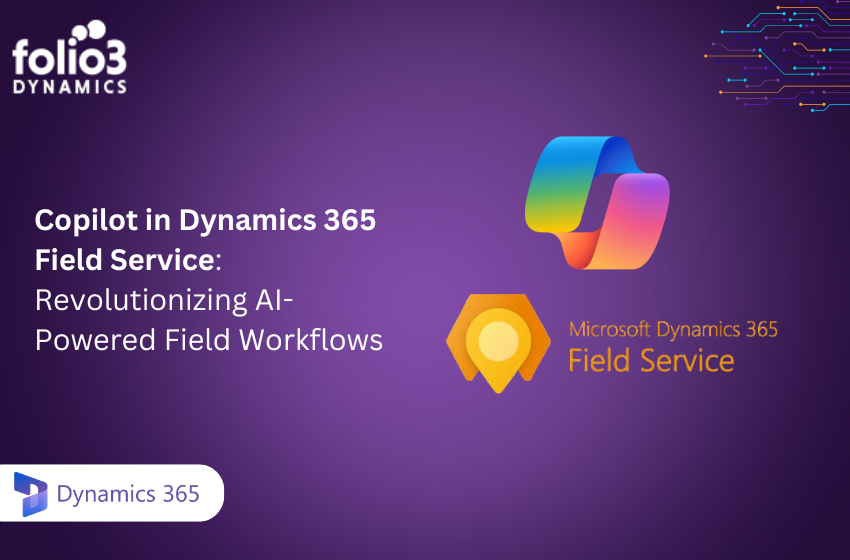The journey to achieving a seamless, perfectly coordinated healthcare system has not ended. It has been going on for decades and it will keep going on till we reach our final goal. Since the enactment of the ARRA act and incentivizing the EHR system back in 2009, healthcare organizations have had no choice but to switch to electronic health records and abide by the specified expectations and regulations including the electronic exchange of data. This was probably the turning point and beginning of the journey towards healthcare interoperability.
In this day and age, it’s not just the standards your organization has to adhere to, it is each stakeholder who is part of the entire healthcare system. Today, the patients are now much more aware of their rights and competitive healthcare quality and patient care are more of a need than an advantage. Policies are changing, hospitals and healthcare facilities are providing better quality care, and the world is upgrading while it lays down the foundation for the eventual goal of a perfect healthcare system with unmatched healthcare interoperability.
What is Interoperability in Healthcare?
Healthcare interoperability refers to the ability of various devices and information systems to securely access, integrate, utilize, and exchange healthcare data digitally. Therefore, minimizing communication gaps and errors and optimizing health outcomes for all patients and individuals. For context, patient-focused resources like a psoriasis guide show how clearer, more accessible health information can improve patient understanding—interoperability aims to achieve this on a system-wide scale.
This exchange of important healthcare data may be within the said organization, across organizations, or even across different countries. As mentioned earlier, the goal is to achieve a seamless system where every stakeholder has secure, real-time access to relevant healthcare information, no matter which healthcare organization he or she refers to, or where in the world it may be.
Why is Interoperability in Healthcare Important?
Since more and more healthcare organizations are digitizing their records and using EMR and EHR systems, interoperability in healthcare has gained importance. Healthcare organizations have to remain competitive and for that, they have to keep looking for ways to optimize communication and data exchange processes and maximize patient satisfaction while also reducing cost.
Interoperability between healthcare systems is important for the critical Patient Health Information (PHI) to stay accurate. It makes sure that paperwork and searching for lab results is less time-consuming and allot more time on delivering excellent quality.
Data sharing in healthcare has always been paradoxical. Since PHI is confidential, there will always be security concerns, and sharing it requires the highest levels of security to prevent any misuse of data. On the other hand, not being able to access the same data can cause significant harm to the patient, and thereby, even the healthcare organization. To gauge the importance of interoperability one must realize that only seamless healthcare interoperability can solve these concerns and issues that may lead to higher costs and worse health outcomes.
Enhanced interoperability would enable every healthcare stakeholder to access the information they need regardless of organization, healthcare vertical, or even country. It would allow patient information to be safe and accessible and even improve the patient experience as a whole.
What is Health Information Exchange?
Health Information Exchange is electronic healthcare data-sharing between organizations. It uses applied regulatory and compliance standards to ensure a secure transfer of information. HIE organizations exist all over the United States and provide the technology and services that facilitate an easy exchange and sharing of health information. The goal of these companies is to maximize interoperability and facilitate the access and secure and timely sharing of important clinical data.
The Four Levels of Healthcare Interoperability
Healthcare interoperability categorizes into four different levels as defined by the Healthcare Information and Management Systems Society (HIMSS) as well as relevant informatics experts. Some levels, however, need additional advanced technological developments in healthcare and far more innovation to be able to reach full potential today. The levels are as follows:
Foundational
Foundational interoperability as the name suggests is the “foundational” or most basic level. It is when data transfer is secure, without any transformation or interpretation between two systems. So for instance, if a hospital staff member downloads a patient’s lab reports via the laboratory’s portal and then enters the data manually into the patient’s record it is an example of foundational interoperability.
Structural
Achieve structural healthcare interoperability requires exchanging or transporting patient data between systems. It has a standard format so that interpretation by various devices and systems can be done easily. Data organizing is done in such a manner that the system on the receiving end can detect its data fields automatically. The level of healthcare interoperability is easier with data standards like HL7 and FHIR. Moreover, it centralizes and enables patient records and data and centralizes the data and consistency so that it is easier to move it between different systems.
Organizational
Operational healthcare interoperability is all about the seamless exchange of healthcare data between different organizations that may be having different goals as well as regulations. This particular level of interoperability requires technology, governance, and policy innovations to ensure a secure and smooth exchange of data with integrated workflows, and most importantly, consent.
Semantic
This level of healthcare interoperability involves a seamless exchange of data that has entirely different data structures. So even if one system has images in a certain format, they can be transferred to another system and understood by the other system because they have gone through a transformation that lets them sync with the recipient system regardless of their original format. So basically, semantic healthcare interoperability is like an amalgamation of structural as well as organizational interoperability. Examples of imaging formats that use semantic interoperability could be DICOM imaging formats. Semantic interoperability is the highest level of healthcare interoperability.
How Healthcare Interoperability Benefits You
Healthcare interoperability helps you access the complete confidential patient health information of a patient from wherever you may be as long as you are a relevant stakeholder, and also allows you to share the information securely with all other stakeholders, like other hospitals, doctors, pharmacies, and laboratories, just to name a few. Having access to this information facilitates you in understanding the current health of the patient in question perfectly and that is how healthcare interoperability benefits you. Doctors can make better, more informed decisions and deliver far better diagnoses and even treatment plans in which the patients can now participate more actively with more knowledge.
Here are some of the benefits of healthcare interoperability:
- It improves healthcare processes and operations: Real-time access to patient health information can speed up processes and do away with manual time-consuming tasks such as taking patient history and making an added effort of documenting for compliance purposes.
- It improves care coordination: This benefit applies to both doctors and patients because the smooth exchange of data across patients and doctors as well as doctors and other doctors helps improve the level of care being delivered. Smooth and secure real-time data exchange helps in better care coordination and management and ensures that doctors can easily access patients health information whenever needed which results in more accurate diagnoses and fewer miscommunication mishaps, which can be fatal.
- It improves patient and doctor satisfaction: Having access to the patient’s complete health history and records is beneficial to the doctor because sometimes patients can forget to tell their doctors about critical details that they deem insignificant. It helps do away with unnecessary lab runs and enables the doctor to prescribe medicines after checking any possible harmful drug interactions. This makes the process smoother and ensures fewer trips to and from the doctor, which greatly improves patient satisfaction. Healthcare interoperability also improves the experience for the doctors and other hospital staff members because it minimizes monotonous manual work that had to be done otherwise.
- It maximizes performance: Easier access in real-time to comprehensive patient records makes analysis of data easier and quicker. This improves staff performance and helps them deliver better care.
- It encourages value-based care: There are stakeholders in the system other than doctors and patients. Public health systems and organizations work to coordinate and improve patient health outcomes in a community. Easy access to comprehensive public health and population data enables a more thorough understanding of the data, and improved risk analysis. It also helps diminish any gaps in the data and prevents any duplicates. Value-based care implies that the patient data used for analyses also include data that isn’t limited to traditional health data. It also includes details like an individual’s access to transportation and housing stability. This data uses include easily identifying and countering health risks within communities and populations.
Types of Interoperability Standards
Standards facilitate healthcare interoperability in the way that they lay some ground rules and expectations with the help of a common, standardized language. This common language then enables seamless interoperability and coordination between different devices and systems, by allowing different healthcare verticals like laboratories, hospitals, healthcare centers, pharmacies, and patients to share healthcare data securely regardless of the application they use.
Here are some of these healthcare data standards:
Healthcare Terminology Standards
These standards are all about representing concepts and medical terminologies in an unambiguous fashion. Meanwhile, they are being communicated between different systems or practices. Different Health Information Systems to communicate with each other and share information simply by relying on terminology standards that promise certain structured vocabularies, code sets, classification systems, and terminologies. Here are some common healthcare terminology standards that are popular in the healthcare space:
- Centers for Disease Control and Prevention (CDC) vaccine codes
- ICD-10 & ICD-11
- Current Procedural Terminology
- RxNorm
- RadLex
- Healthcare Common Procedure Coding System (HCPCS)
- Unified Code for Units of Measure (UCUM)
- National Drug Code (NDC)
- Logical Observation Identifiers Names and Codes (LOINC)
- SNOMED-CT
Healthcare Identification Standards
These standards are used by different entities as well as healthcare verticals to give a unique identity to providers as well as patients. Here are some of the most common ones:
- National Provider ID (NPI)
- National Council of State Boards
- Nurse ID (NCSBN ID)
- Object ID (OID)
- Medical Record Number (MRN)
- Enterprise Master Patient Index (EMPI)
Healthcare Content Standards
These standards are all about the actual healthcare data content that is part of the exchange of information between healthcare verticals and even the patient. Healthcare content standards determine the organization as well as the structure of the content in the healthcare document or message being shared. It also defines common sets of healthcare data for certain types of messages being shared. Here are some of the common standards:
- HL7 v2.X
- HL7 v3 CDA
- CCDA
Healthcare Standards for Security & Privacy
The goal of these standards is quite self-explanatory. Sharing confidential patient health information requires to protect the rights of patients as well as healthcare organizations. These standards are the ones that determine the need for the access, disclosure, use, or sharing of this confidential PHI. Moreover, it even determines what information is shared, when it is shared, and with whom it may be shared. In this way, healthcare security and privacy standards ensure that the integrity of healthcare information is always upheld. The two most commonly used standards for security and privacy are:
- HIPAA Security Rule
- HIPAA Privacy Rule
Healthcare Transportation Standards
These standards are all about the message format while it is being “transported” between different systems, interfaces, document architecture, etc. The standards focus on pull and push methods to facilitate a seamless exchange of healthcare information.
- IHE standards
- Direct Standard
- Digital Imaging and Communications in Medicine standards (DICOM)
- Fast Healthcare Interoperability Resources (FHIR)
What is FHIR?
Fast Healthcare Interoperability Resources (FHIR) is a standards framework for PHI and other healthcare data. The open-source framework is derived from HL7 and was built to make it easier to exchange healthcare data and move it between different healthcare verticals and systems. It does this by providing a standardized structure of the healthcare data and organizing it into different resources such as the patient himself, medications, and conditions, and then this data is interpreted by various systems and applications. FHIR is also used to organize and structure clinical workflow data like appointments as well as financial data such as insurance claims.
Today, many healthcare systems that have made it big in the United States have adopted FHIR standards already. Ever since FHIR has become an important part of the country’s nationwide interoperability roadmap, and recent government laws and regulations are giving more and more importance to FHIR, it has become incumbent upon healthcare organizations to understand and incorporate FHIR standards and make it a part of their interoperability strategies.
The Challenges of Interoperability in Healthcare
Even though healthcare interoperability can do wonders for the healthcare industry, it doesn’t come without its fair share of challenges that still need to be solved. Let us talk about some challenges that are common amongst most healthcare organizations trying to adopt interoperability. Here are some of these challenges and also how they can be overcome.
Budget Constraints
Every healthcare organization does not necessarily have an abundance of financial resources to achieve true healthcare interoperability. to overcome the challenge, one has to check if their government will give you the grant you need to help you update your health records. Solving it by checking for vendors that offer you flexible payment plans, such as pay-as-you-go, which can make technical expenses far more affordable.
Technological Constraints
Different healthcare organizations have different policies and need to follow different sets of regulations according to their location as well as the type of care they are providing. Hence they all have very different and customized data. One can overcome this by connecting the internal as well as external systems through some sort of a hybrid cloud platform, which gives them the chance to integrate data and share it with all the customizations intact.
Lack of Coordination
Perfect healthcare interoperability needs perfect coordination within and between different healthcare verticals and organizations. All the regulatory authorities can do is provide regulations and standards to follow to achieve this interoperability but the healthcare organizations are the ones that have to prioritize interoperability and follow those standards and rules.
Legacy Systems
There are many healthcare organizations even today, that are still working on much older legacy systems. These organizations find it difficult to meet interoperability requirements and have to modernize their systems simultaneously, which is even more difficult. This challenge can be overcome by employing a hybrid cloud approach, which lets them migrate their data, and at the same time, also make it accessible for more modern systems and programs.
Achieving Perfect Healthcare Interoperability
Achieving perfect healthcare interoperability is not easy as there are quite a few challenges, but it isn’t impossible either. Since, all the challenges can be overcome, it’s a long road to success but will lead to a better if not perfect healthcare system.


